How To Plant A Tea Garden!
Make a little extra room in your garden or a few flower pots and build your herbal tea garden with these easy tips.
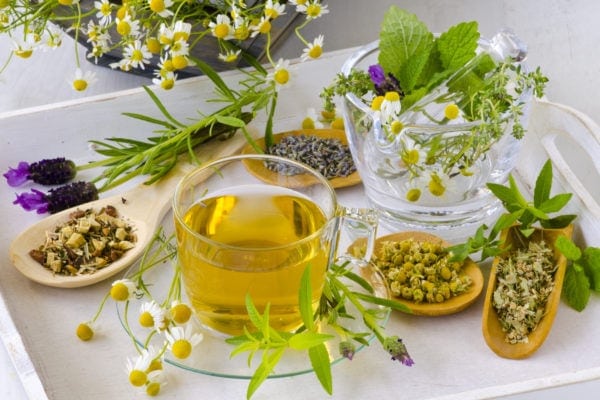
How do you like your tea? Hot with milk and honey? Iced with a little bit of lemon and sugar? Made only with the infusing powers of the sun? Whichever way you like to drink your tea, having your favorite herbs on hand is a sure way to create a delightful drink any time of year. And what better way to ensure a storehouse of wholesome herbal teas than to grow your own? Make a little extra room in your garden or a few flower pots and build your herbal tea garden with these easy tips.
Chamomile
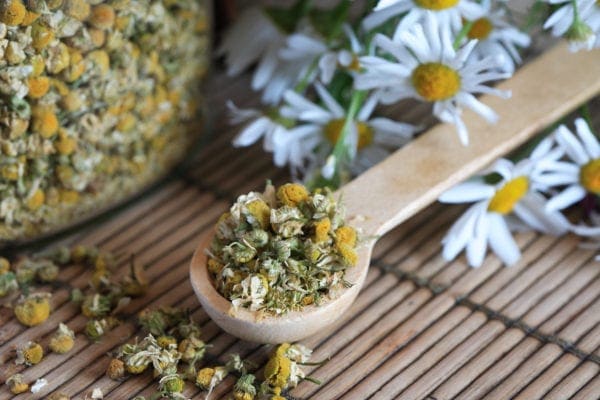
Chamomile, one of the most popular tea herbs, is simple to grow and looks beautiful in a garden or window box. Its pretty daisy-looking flowers have a sweet apple-like aroma that is good for attracting bees. There are two main kinds of chamomile that folks grow. German chamomile, an annual that can grow up to two feet tall, and Roman chamomile, a perennial that grows to be about 4–12 inches tall. Because Roman chamomile grows out, rather than up, it makes an attractive and effective ground cover. Both varieties can be used for tea.
To Grow Chamomile:
Like many other herbs, chamomile loves full sunlight and prefers well-drained soil. Chamomile will grow just about anywhere but does not like very hot temperatures (above 98 degrees) for very long. If chamomile is prepared as an infusion, it can to help to calm the nerves and relieve stomach upsets. It can also be used to help relieve colic in small children. To use chamomile for tea, harvest the flowers early in the morning, when young and just opening. Deadhead often to promote constant blooms. If growing the perennial kind, cut it back in the fall to prevent woodiness next season and cover it with mulch to protect it from winter weather. To make tea, steep about 1 tablespoon of fresh flower heads — or 2 teaspoons, if dried — in one cup of boiling water. Steep the blossoms for five to ten minutes. Sip and relax!
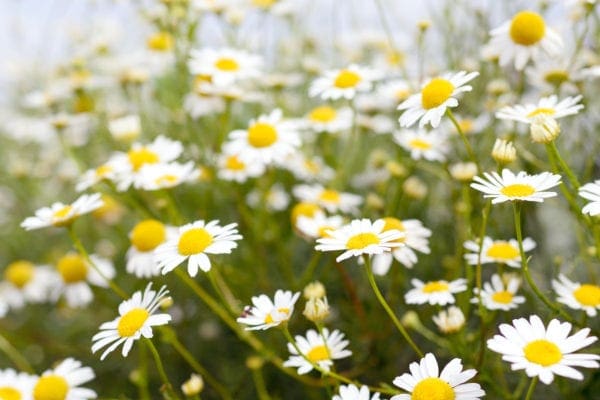
Lemon Balm
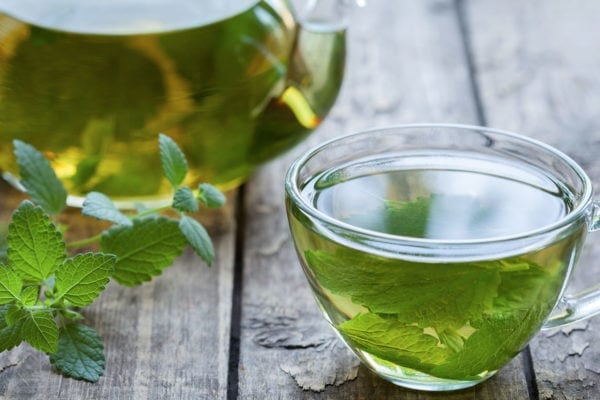
Known as the “heart’s delight” in southern Europe, and used medicinally by the Greeks nearly 2,000 years ago, lemon balm makes a soothing hot tea or a cooling tea sweetened with honey. Lemon balm, like many other plants in the mint family, is easy to grow just about anywhere. Caution, though, lemon balm will spread! If you are planning to grow it in your own garden you may want to keep it contained in a small planter box or a pot buried in the ground. It can also grow in a pot aboveground. If growing in a pot, make sure to prune often so its leaf stock matches the rootstock.
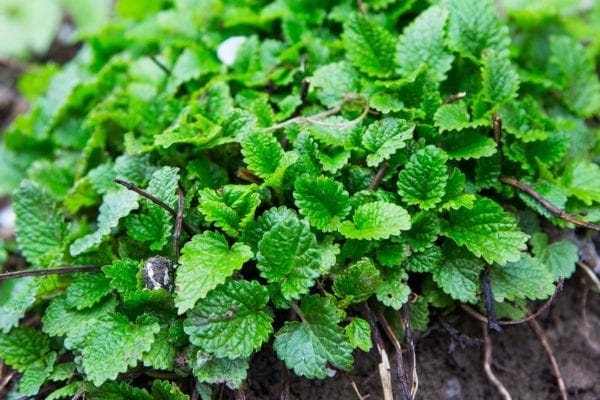
To Grow Lemon Balm:
Lemon balm prefers full sun with some midday shade and grows well in moist soil. Lemon balm leaves can be harvested anytime, but the flavor tends to be best right when flowers begin to open. For a tea, infuse a few leaves in boiling water and let steep for 2-5 minutes. Cool tea and honey for sweetener (add honey when the tea is still hot). Similarly to chamomile, lemon balm helps calm the nerves and uplift the spirit. It is also used to provide relief from bronchial systems, colds, and headaches.
Lavender
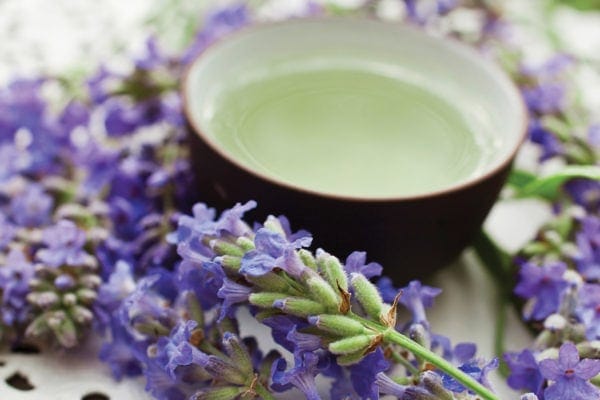
An herb with a beautiful and fresh scent, lavender has a number of uses beyond herbal tea. It can be used an insect-repellent, added to bathwater, stitched into pillows and spread throughout a garden to create a lovely purple haze across the landscape. There are many varieties of lavender to choose from, the most popular being lavender officinalis and lavender spica. All lavender prefer similar growing conditions. A sunny open area for growing helps to discourage fungus and lets lavender grow tall freely. Your soil will need to be very well drained, perhaps even bordering on sandy. Some lime content also helps.
To Grow Lavender:
Lavender can be grown in containers but tends to do better in a garden space. Seeds should be sown in late summer or autumn. You can divide and plant in the autumn, as well. To harvest, gather flowering stems just as the flowers begin to open. Leaves can be picked at any time. To make a tea, infuse about 2 tablespoons of fresh flowers —or 4 teaspoons dried—into boiling water and steep 2- 5minutes. Lavender tea is helpful for soothing headaches, calming nerves, and for preventing fainting and dizziness.
For some delicious herbal tea recipes see below:
Homemade Herbal Tea Recipes
Chamomile-Pomegranate Tea
Ingredients:
4 tablespoons fresh chamomile
3 cups boiling water
1 cup pomegranate juice
1/3 cup sugar or less for honey
Directions:
Place tea bags in a large heat-proof measuring cup or pitcher; pour boiling water over tea bags. Steep 1 hour, or until cooled to room temperature. Remove and discard chamomile. Add pomegranate juice and sugar or honey to taste, stirring until it dissolves. Serve over ice; garnish with mint sprigs.
Lavender Lemon Balm Iced Tea
Ingredients:
2 cups boiling water
1 teaspoon dried lavender flowers
1 teaspoon dried lemon balm leaves or 1 tablespoon fresh leaves
Honey to taste
Directions:
Pour water over herbs steep for 3-5 minutes then strain. Sweeten with honey. Chill and serve over ice with fresh lemon and a sprig of lavender.
Sherie Blumenthal
Sherie Blumenthal is a Food Access Coordinator with Lots to Gardens, an urban gardening and community nutrition initiative sponsored by St. Mary’s Health System in Lewiston, Maine.


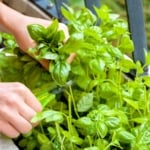
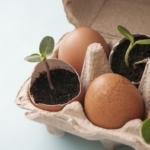
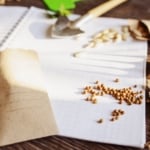

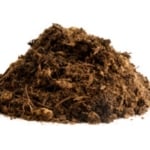
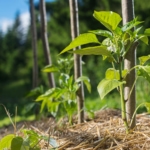
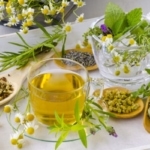
I am working on expanding my tea garden. One of my favorite herbs is tarragon. At the end of a long day a warm cup of tarragon tea combined with a little lemongrass.
I am working on increasing my tea garden. One of my favorite herbs is tarragon. At the end of a long day I combine it with lemongrass. This make a wonderful hot or cold tea.
A cat ? poops in my garden daily. I have tried every suggestion out there on Pinstrest and bought out the garden city.
I have had same issues. I tried many things last year that did not work. This year I found a croaking frog and hooting owl to set in the flower beds along with green lizard worked. I cant get over how they don’t poop anymore. They are motion sensored. You have to try. I am amazed it works. It’s a miracle. I found them on Amazon.
This is amusingly hyper specific to the project I’m working on right now which is a tea garden in our front yard planter. Hoping to do these 3 plus coneflower because echinacea is so good for colds too.